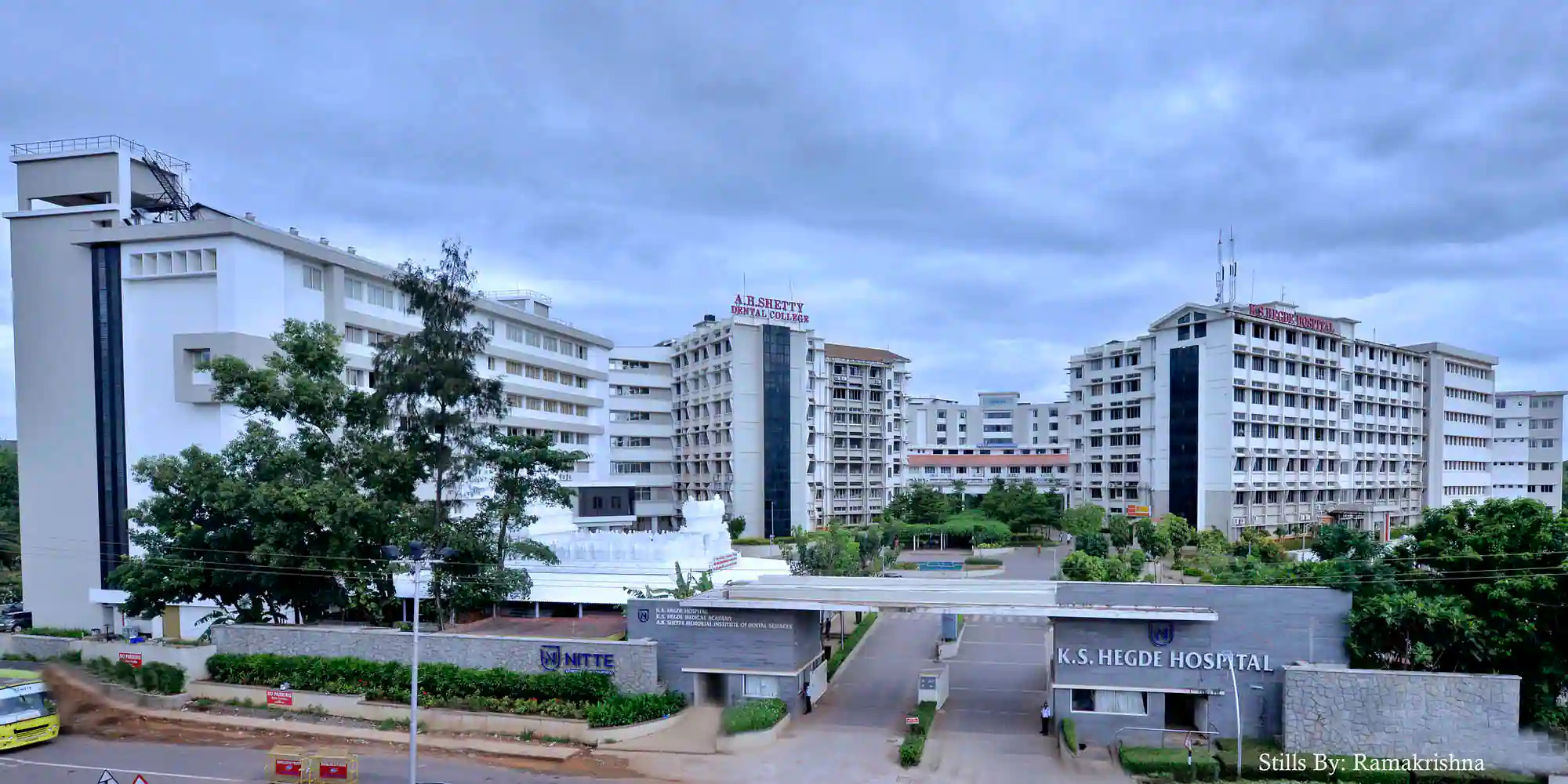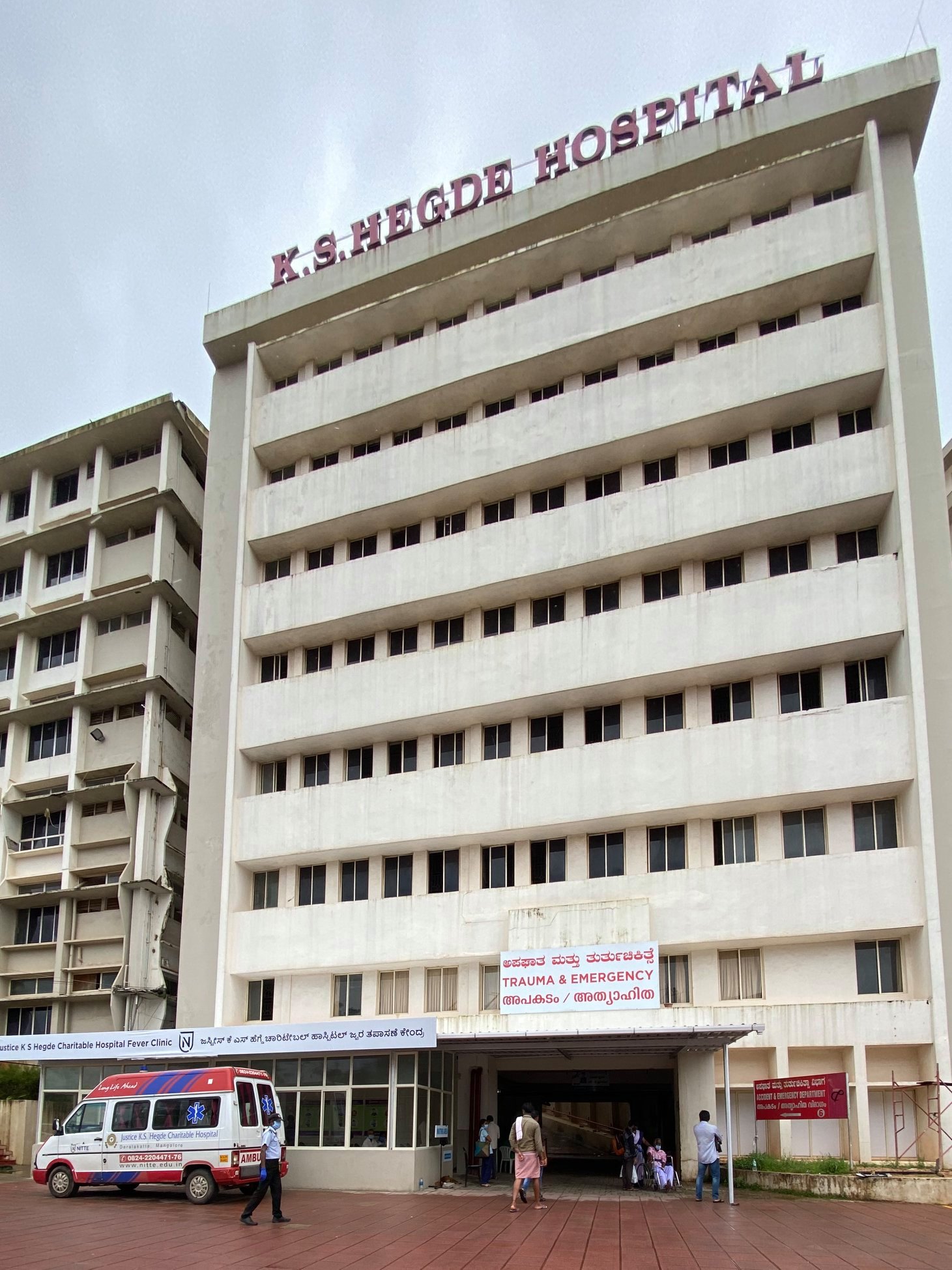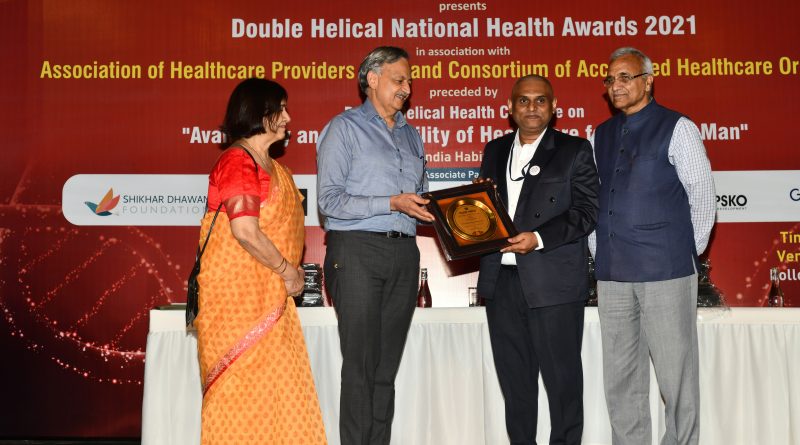Justice K S Hegde Charitable Hospital REceives “Outstanding work in providing Affordable and Quality Care during COVID and Beyond”

Justice K S Hegde Charitable Hospital (JKSHCH) which is 1000 bedded NABH and NABL accredited multispecialty teaching hospital for K S Hegde Medical Academy and other allied health institutions of the Nitte (Deemed to be University). With a foot fall of about 2 lakh outpatients and 17000 inpatients, the hospital is catering to the people of Dakshina Kannada and adjoining districts of Karnataka and Kerala states.
Hospital is committed to deliver comprehensive, preventive, curative and promotive health care to the people with a high degree of credibility, integrity, ethical standards and social concern. The hospital is named after the illustrious Late Justice K.S.Hegde who established the Nitte Education Trust in 1979.
An offshoot of the trust, The Nitte (Deemed to be) University headed by the Chancellor N Vinaya Hegde, with the vision “To build a humane society through excellence in education and health care”, the initiatives being taken towards availability and affordability of health care are a legion. Role of Justice K S Hegde Hospital in providing Covid-19 Care Preparedness of the health system at all levels is crucial in a pandemic like COVID-19. In a ‘system,’ things are in a dynamic equilibrium, whereas pandemic is a situation of imbalance, exponential to time. The district was on high alert right from end of January 2020; the National Index case was detected in the adjoining Kerala, having a transit history through Dakshina Kannada district while returning from abroad. The surveillance was high.
Furthermore, many critical and trying ‘firsts’ added more chaos to the imbalance that the pandemic had created not only on health but in all spheres of life. At the very beginning a patient, with an international travel history to endemic areas and classical influenza like symptoms, presented as a surgical emergency, after visiting many medical centers to Justice K S Hegde Charitable Hospital. At a time when there were no facilities for testing for covid in the district and would take almost 5 days for the report, the hospital had the firm conviction to treat this patient. Armed with previous experiences of HINI, Bird flu, Nipha, presumed this case of COVID, though fortunately she was later tested negative. PPE not being available, staff being scared and the risks involved proved to be full dress rehearsal in all aspects, made us think collectively and the aim was to save life whether COVID or not. A Systems approach gave a better preparedness in a short time. Our first patient of diagnosed Covid was a 10 months old baby admitted on 23.03.2020.

It was indeed a very tough time. The hospital worked hard treating and monitoring the health status of this child and his primary contacts. Contact tracing and monitoring of the containment and buffer zones were effectively done in close liaison with the help of the district authorities. Coordinated transportation of the child and the family to their home was facilitated. Further, strict home quarantine post-discharge was also ensured. Later in March 2020, A ‘systems’ approach was established by the departments by optimizing health infrastructure, human resources, medical products, funding, leadership, and governance. 1. Infrastructure Changes: The infrastructural preparedness helped to manage the COVID positive patients efficiently very early in the outbreak without collateral issues. The following infrastructure changes were addressed (a) Distinct COVID and non-COVID service areas were created, areas for stable and unstable COVID suspect and COVID positive that would include adult, pediatric and neonatal (born to COVID positive mother) beds were identified. The Children’s Intensive Care Unit (CICU) complex which had an isolation room and high dependency areas equipped with high-efficiency particulate air (HEPA) filtering system and negative pressure, best suited for management of ill COVID-19 patients was converted to Covid Critical Care and later on, almost half the hospital was isolated for covid care. b) Separate entrance and exit for HCW and patients, (c) donning and doffing areas, and (d) areas for non-COVID stable and unstable patients were arranged. Fever Clinic was established as the single-entry point for all patients, including children and bystanders. These changes were to be planned within no time and decision to be disseminated to all staff. Implementation was done on a war footing. 2. Service Delivery: Check-list on travel and contact history, temperature screening at the single-entry point for all patients was made mandatory. An Institutional Task Force involving clinicians, epidemiologist, microbiologist, engineering, and management personnel deliberated to draw a protocol. Guidelines were put in place and made operational. Patient education was done. However, given the short time, not much could be controlled over the community in general and patients in particular. The focus was on the ability to adapt to further requirements and agility for immediate action. The hospital management’s strong commitment and reassurance to the safety of all employees helped the department in executing its plan by the relocation of resources, roles, and responsibilities of HCW and handholding. The management also took care in terms of the remunerations of all the health care workers which did not get affected or deducted on account of their absence to duty due to sickness or leaves granted on govt orders. While the district hospital was converted as designated Covid hospital accepting only covid patients, JKSHCH served as a centre for treating all non Covid patients of district hospital, in addition to Covid cases received by the hospital. JKSHCH was recognized as the only centre for receiving the non covid patients of neighboring districts of Kerala during the lockdown when the interstate borders were closed. This was in line with the directions from the district administration and directives of the Supreme Court.
The hospital had agreed to treat medical emergencies reporting from the bordering areas of Kasargod district as per the criteria for transfer of patients listed in the MOU. The district administration also referred non-COVID emergencies on rotation on fixed day of the week to our institution. All the patients were treated without any bias and meaningful service was provided as and when both hands across the border were favorably joined. The hospital also supported the designated hospital by sending its medical team. A real-time reporting regarding the availability of ICU beds and ventilators for adults and children was established by extensive technology-based electronic methods.

